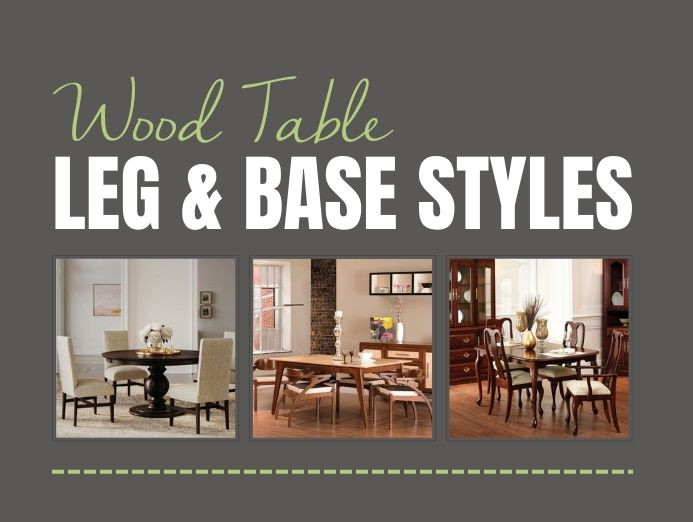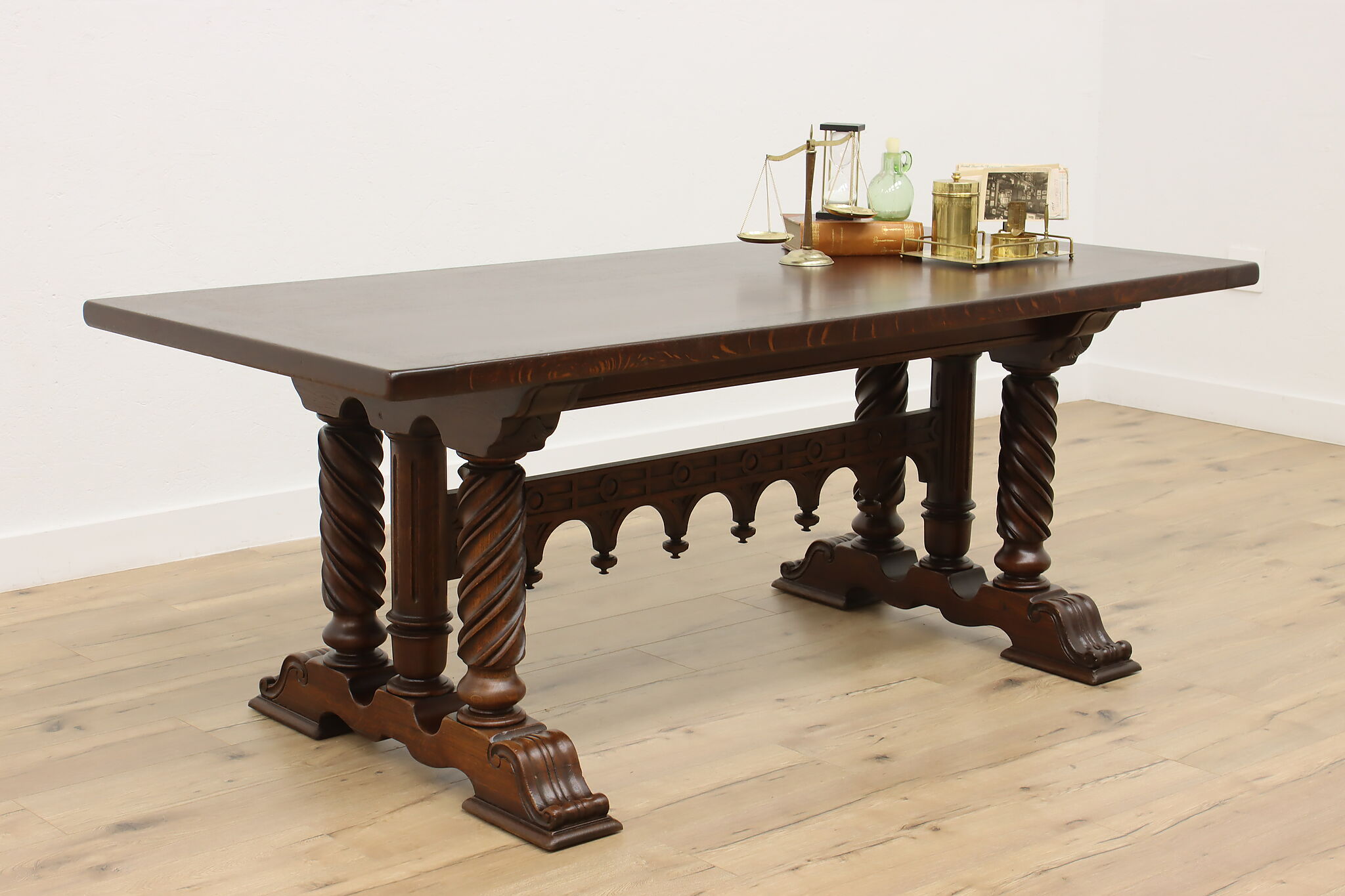Expert Tips for Installing Dining Area Table Legs for Optimum Security
When it concerns mounting dining area table legs, accomplishing maximum security is extremely important for both performance and aesthetics. The procedure begins with picking the best materials and equipment, adhered to by meticulous alignment and factor to consider of weight distribution. Each step plays an essential duty in ensuring that the finished product holds up against everyday usage without compromising safety or style integrity. Understanding the subtleties of these aspects can significantly affect the total result. What certain methods can improve security also further?
Choose the Right Legs
When picking the appropriate legs for your dining space table, it is important to consider both capability and looks. The legs you choose will significantly influence the general design and stability of the table. Review the table's planned usage; if you expect regular gatherings, stronger legs, such as those made from solid wood or metal, might be more appropriate, as they offer increased durability and support.
Following, think about the elevation and style of the legs in relation to the tabletop. Basic dining tables generally range from 28 to 30 inches in elevation, so make sure the legs straighten with this criterion for convenience. The design of the legs must enhance the layout of the tabletop-- whether it be modern-day, rustic, or standard. As an example, tapered legs can add a contemporary touch, while transformed legs may convey a much more timeless aesthetic.

Select Appropriate Hardware
How can the right equipment improve the security and longevity of your dining room table? The choice of appropriate hardware is vital to ensuring that the legs of your table are securely connected and able to withstand routine use. High-quality screws, screws, and braces give the essential stamina to support the weight of the table, in addition to any kind of additional lots positioned upon it throughout gatherings or meals.
When picking screws, decide for those made from long lasting products such as stainless-steel or brass, which withstand rust and preserve integrity in time. The length of the screws is just as important; they ought to penetrate deeply right into the table's structure without compromising stability. For bolted links, think about making use of lock washing machines to stop loosening up as a result of vibration or motion.
Additionally, making use of corner brackets can add additional support, particularly for larger tables or those with much heavier tops. These braces disperse weight equally and assist keep the table's form. Ensuring that the equipment you choose is appropriate for the specific products of your table will certainly even more enhance its total security and longevity, enabling you to appreciate your eating experience for years to come.
Ensure Correct Positioning
Appropriate placement of dining-room table legs is vital for both visual charm and practical security. Misaligned legs can cause an uneven tabletop, which may not only be visually uninviting yet also jeopardize the table's usability. To accomplish optimum alignment, start by determining the range from the table's corners to the leg accessory factors. This guarantees that each leg is located equidistant from the edges, creating you could check here a well balanced appearance.
Use a level throughout installment to validate that each leg is perpendicular to the table top. It is a good idea to mark the preferred leg positions on the bottom of the table with a pencil or masking tape prior to securing them.
Furthermore, confirm the alignment after the first screws are tightened up, as modifications might be required before totally protecting the equipment. By prioritizing proper positioning, you not just boost the table's total design but likewise make certain that it remains steady and useful for years to find.

Consider Weight Circulation
After making certain proper placement of the dining area table legs, it's crucial to think about weight circulation to enhance stability and functionality. dining room table legs. Correct weight circulation is essential in preventing tottering and guaranteeing that the table can sustain its designated tons without threat of tipping or breaking down
When positioning the legs, ensure they are put at equivalent distances from the facility of the table to uniformly disperse the weight across the framework. Take into consideration the weight of the tabletop and any things that will frequently relax on it, such as attractive pieces or tabletop devices. Tables with heavier surfaces must ideally have legs located closer to the corners, as this takes full advantage of the base of support and minimizes the risk of instability.
Furthermore, if the table is meant for usage in a high-traffic area, take into consideration using larger materials for the legs or adding supporting components, such as cross-bracing or a reduced shelf - dining room table legs. These changes can assist maintain balance and stop changing during use. Ultimately, a well-considered weight circulation strategy will substantially enhance the table's total efficiency, guaranteeing it continues to be a eye-catching and functional focal point for your eating area
Test Stability Prior To Use
Evaluating the stability of the dining area table prior to usage is a crucial action that ought to not be neglected. Guaranteeing that the table is secure and secure can protect against accidents and prolong the life-span of the furniture. Begin by using mild stress to various factors on the table surface area. Lower on the go to website facility and after that along the edges, observing any type of wobbling or shifting. Recognize the legs or joints that might need change. if the table reveals instability.
Following, examine that all screws and fasteners are tightened effectively. Loosened links can result in instability and prospective damages with time. If necessary, use timber adhesive on joints to improve stability, making sure to allow adequate drying out time.

Conclusion
Finally, the setup of dining-room table legs calls for mindful consideration of products, positioning, weight, and equipment distribution to achieve maximum stability. By picking top notch bolts and tough legs, making certain precise positioning, and distributing weight evenly, the structural honesty of the table can be dramatically improved. Conducting a stability test prior to regular usage even more guarantees that the table will withstand everyday stress, consequently offering a risk-free and trustworthy eating experience.
When it comes to installing dining room table legs, accomplishing maximum security is extremely important for both functionality and aesthetics. The legs you select will considerably affect the general design and security of the table navigate to this site (dining room table legs). Basic dining tables typically range from 28 to 30 inches in elevation, so guarantee the legs line up with this standard for convenience.Appropriate placement of eating room table legs is necessary for both visual charm and practical stability.In verdict, the setup of dining area table legs requires cautious consideration of products, weight, positioning, and equipment circulation to accomplish maximum security